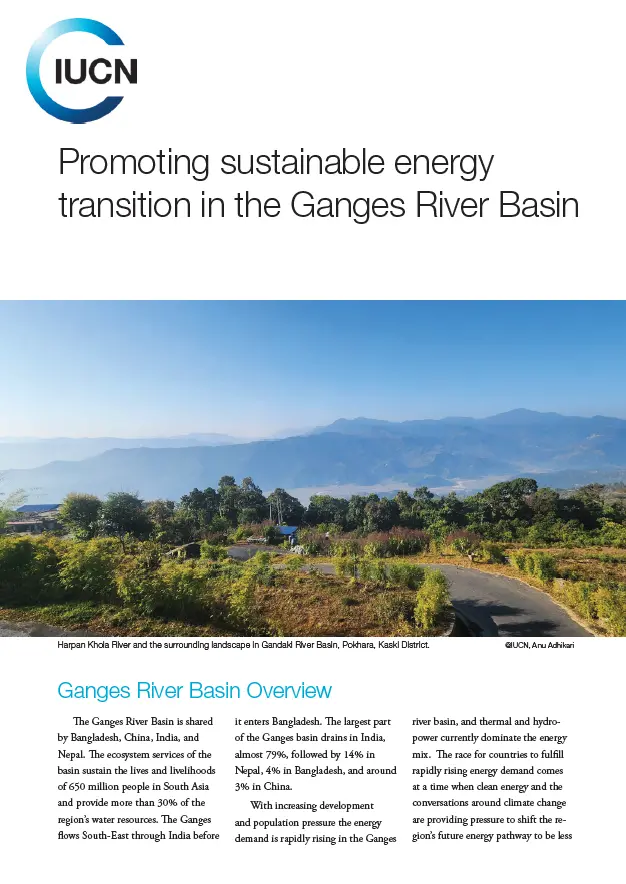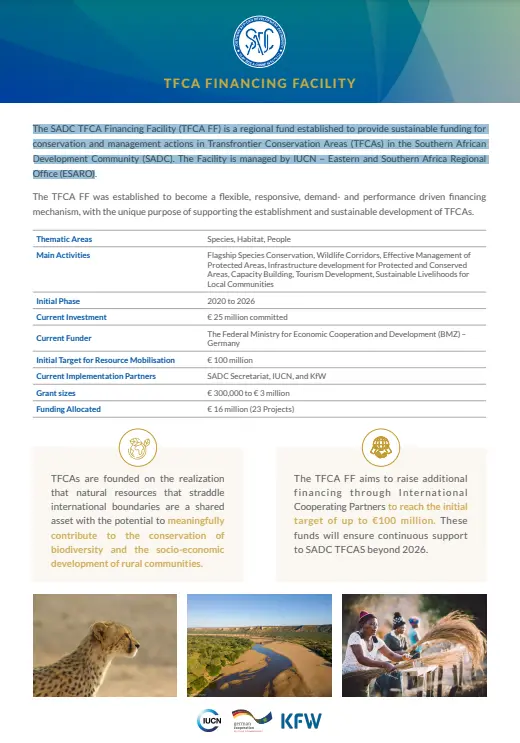Search: Eastern and Southern Africa resources

Brochure | 2023
Ganges Energy brochure - Promoting sustainable energy transition in the Ganges River Basin
The brochure provides an overview of Nepal, India and Bangladesh energy mix and recommendations for improved energy integration among these countries, including the opportunity to utilise renewables such as solar and wind for more affordable and secure energy systems while maintaining the…

Brochure | 2022
IUCN SADC Transfrontier Conservation Area Financing Facility Fact Sheet
The SADC TFCA Financing Facility (TFCA FF) is a regional fund established to provide sustainable funding for conservation and management actions in Transfrontier Conservation Areas (TFCAs) in the Southern African Development Community (SADC). The Facility is managed by IUCN – Eastern and…
Grey literature | 2019
Governance of the Ganges River Basin
The Ganges River Basin is shared by four countries – Bangladesh, China, India and Nepal – and though it lacks a regional basin-level cooperation agreement to facilitate its joint management and address common challenges such as floods and climate change, there are four bilateral agreements on…
Grey literature | 2018
Opportunities for benefit sharing in the Meghna Basin, Bangladesh and India
Considering the increasing recognition of the role of benefit sharing in facilitating transboundary water cooperation, the IUCN BRIDGE GBM project is facilitating development of a Transboundary Benefit Sharing Strategy (TBSS) for the Meghna Basin. This report has been developed as an input to…
